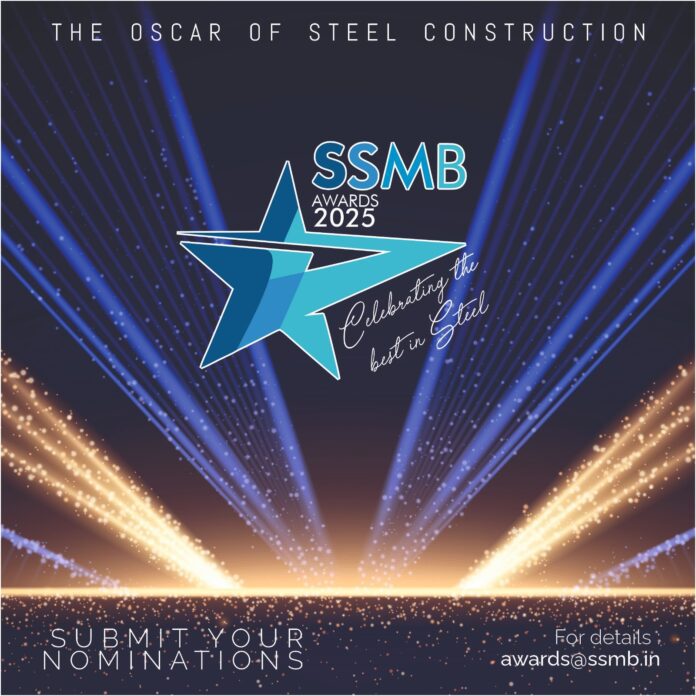Introduction: With an illustrious portfolio spanning aviation, healthcare, and complex infrastructure, SWAPNA PIKALE — former Principal Architect at Larsen & Toubro Limited and now Project Architect at Gensler India — has masterfully leveraged steel’s versatility to deliver high-performance, sustainable, and visually striking projects. In this conversation with SSMB, she shares how steel is not only accelerating construction timelines but also redefining the very boundaries of design for India’s future.
How has steel contributed to the speed and versatility of your projects like Navi Mumbai International Airport and Nanavati Hospital?
Steel has been pivotal in both projects. Its modularity and adaptability allowed us to meet highly complex design requirements while compressing construction timelines. The prefabricated components for the airport helped us work to extremely tight schedules, while in Nanavati Hospital, steel enabled faster assembly in a live hospital environment. In both cases, the material’s flexibility and precision were crucial in delivering high-quality execution within set deadlines.
How did steel help balance aesthetics with functionality in the Nanavati Hospital project?
In Nanavati Hospital, we achieved a clear ceiling height of 2.8 m with a floor-to-floor height of just 3.4 m, accommodating all services within 600 mm. This level of spatial efficiency would not have been possible without steel’s inherent strength and slenderness. It allowed us to integrate services seamlessly without disrupting the architectural intent, ensuring both operational functionality and design elegance.
“Steel became our most reliable partner in meeting high-performance demands on record timelines.”
How does steel fit into your sustainability strategy?
Steel is inherently sustainable and can be reused, repurposed, and recycled. On-site, it reduces overall material consumption, uses significantly less water than conventional methods, and speeds up construction, thereby lowering the project’s environmental footprint. Our goal is zero-waste construction, and steel plays an integral role in achieving that, especially in large-scale projects with strict timelines.
What misconceptions do clients often have about steel, and how do you address them?
The biggest misconception is cost. Many clients view steel as expensive, but this is a short-sighted view. While the upfront material cost may be higher, the lifecycle benefits like faster construction, reduced maintenance, and durability make it extremely cost-effective. Part of our role is to help clients see the long-term value steel brings to their project.
Why do you often choose steel over other materials?
Steel offers unmatched versatility in structural form. Today, with a variety of rolled sections and tubular members available, it allows us to push design boundaries while keeping structures efficient. The flexibility to create everything from clean geometric frames to complex sculptural forms makes it a natural choice for projects where innovation and performance are equally important.
“Steel’s true value lies beyond cost. It is about time saved, longevity ensured, and visions realised.”
Can you share an unconventional use of steel from your projects?
At Navi Mumbai Airport, we designed petal-shaped steel columns. These structural elements that also serve as defining architectural features. They deliver the necessary structural performance while giving the space a unique visual identity. Without steel’s precision and adaptability, such complex forms would have been extremely difficult to execute within the required timeline.
How do you ensure error-free fabrication and execution?
We focus on freezing the design before fabrication. Once the General Arrangement Drawings (GADs) are approved, the path forward becomes clear for all stakeholders, minimising on-site modifications and delays. This disciplined approach is critical to maintaining both speed and accuracy on large, complex projects.
How did you address the challenges of working on the Nanavati Hospital project as a brownfield development?
The biggest challenge was operating in a live hospital with minimal disruption to services. Early MEP integration through BIM was a game-changer, enabling seamless coordination and rapid execution. Steel’s prefabrication advantage allowed us to assemble large elements quickly, reducing site congestion and noise, both critical in a healthcare environment.
And what about the pace and complexity of the Navi Mumbai Airport project?
The airport was a high-speed project, with five months from design to execution for critical steel packages. Using 360° coordination and BIM, we achieved seamless integration between architectural, structural, and services teams. Steel’s modularity allowed us to execute intricate forms, like the petal columns, without compromising on speed or precision.
What innovations in steel are you most excited about?
Fire-resistant steel is a major leap forward. It removes the need for intumescent coatings, which often create coordination challenges with interiors and services. This advancement simplifies construction while improving safety and performance, especially for high-occupancy or high-rise buildings.
What role do industry forums and events play in advancing steel adoption?
They are vital. These gatherings enable cross-pollination of ideas, showcase innovations, and provide real-world case studies of steel’s potential. While steel is more accepted today, these forums give it the extra push needed for widespread adoption in diverse building types from airports and hospitals to housing and commercial developments.
“With the right environment, women can thrive in any construction role, no matter how demanding.”
As a woman in the construction industry, what has your journey been like?
In a contractor’s role, challenges are inevitable, especially in a male-dominated field. However, at Larsen & Toubro, my experience has been merit-based and gender-neutral. Passion, commitment, and results matter more than anything else. With the right environment, women can thrive in any role, including the most demanding on-site responsibilities.
What advice would you give young architects exploring steel?
Never limit steel to premium projects. Explore its role in affordable housing, modular relocatable units, and community infrastructure. Steel’s adaptability, speed of construction, and sustainability make it ideal for socially impactful design. Push boundaries, keep learning, and collaborate closely with engineers and fabricators to fully unlock its potential.
|
Landmark Projects:
|
Navi Mumbai International Airport
- Project Type: Greenfield Airport
- Steel Usage: High-strength structural steel for iconic petal-shaped columns
- Timeline: 5 months from design to execution for key steel packages
- Key Tools: BIM, 360° coordination
- Design Highlight: Seamless integration of structure with architectural identity
Nanavati Hospital
- Project Type: Brownfield healthcare redevelopment
- Ceiling Height: 2.8 m clear
- Floor-to-Floor Height: 3.4 m (including 600 mm for services)
- Execution Edge: Prefabricated steel modules assembled in a live hospital environment
- Sustainability Impact: Reduced water usage, minimised waste, faster execution
Steel Advantages in Swapna’s Projects
- Speed: Shorter timelines through prefabrication and modular assembly
- Space Efficiency: Slim sections maximising usable space
- Sustainability: Zero-waste approach through reuse and reduced resource consumption
- Design Freedom: Ability to realise complex forms without structural compromise
- Coordination Ease: Early integration with BIM ensures smooth MEP and interior planning
Timeline Snapshot
2019–2021 – Design and execution of Nanavati Hospital redevelopment
2022–2023 – Navi Mumbai Airport terminal packages; integration of signature steel features
Ongoing – Exploring adoption of fire-resistant steel for next-generation healthcare and infrastructure projects
Industry Insight – Fire-Resistant Steel
- What is it? Structural steel engineered to maintain strength and stability under high temperatures, certified for fire resistance without coatings.
- Why it Matters: Eliminates intumescent paint, reducing cost, coordination issues, and maintenance needs.
- Impact: Ideal for hospitals, airports, and high-rise commercial spaces where safety, speed, and clean finishes are priorities.




